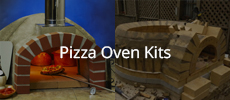Humidity. The byproducts of combustion, whether from gas, wood, or even charcoal, are CO2 and water. Electric ovens actually remove water from the air in an oven, and most home ovens are electric.
The difference is noticeable in all oven-cooked products, but especially in pizza and focaccia, and one other...poultry. In both cases, the product is "juicier"...in turkey and chicken, the meat, even of the breast, is literally dripping with juice.
In pizza, the crust has a crunchy/tender quality that is unmatched in electric ovens. Right out of the oven, the thinner breads will be firm to the tooth, but emit billowing steam when torn. You won't see that, or taste it, even in the best electric oven setups (like putting a huge stone in the oven to soak up, then radiate, heat). This quality is also present in hearth loaves, but is not so obvious because they're cooled before eating. It does create the larger "nooks" in artisan breads. I have verified this by baking the same loaf from the same batch of dough in two different ovens.
Another product that can show the difference between ovens, but works much better in electrics, is the confection divinity (egg whites, sugar, and ground nuts). In a gas oven, it comes out spongy and glossy like a marshmallow, in an electric it's dry and crisp, crunchy to the tooth. In this case, though, electric wins! I haven't tried making divinity in the wood-fired oven, but I don't think it would work

Happy baking!!
Scott









Leave a comment: